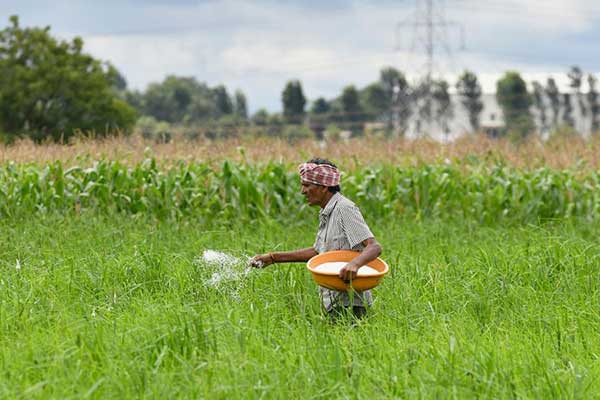Abstract
The International Forum for Environment, Sustainability, and Technology (iFOREST), hosted a stakeholder gathering on the advantages of ‘Green Urea’ for the economy and environment in a low-carbon future, at India Habitat Centre, Delhi on July 30th, 2024. The report emphasizes the immediate necessity of a Green Urea Mission to update urea production and maximize consumption. The Green Urea Mission in India is a crucial effort focused on improving sustainable farming methods by using environmentally friendly fertilizers. This study examines the policies, implementation approaches, and obstacles encountered in achieving widespread adoption of the mission. It starts by looking at current fertilizer policies and analyzing how green urea fits within the country’s sustainability objectives. The research focuses on the existing production techniques and the shift towards eco-friendly urea, stressing the importance of technology and financial tools like subsidies.
Despite its potential, the mission encounters significant challenges, such as high production costs, infrastructure limitations, and environmental concerns related to traditional farming practices. Through case studies of successful global implementations and pilot projects within India, the paper identifies best practices and lessons learned. It concludes with policy recommendations aimed at enhancing financial incentives for farmers, strengthening research and development efforts, and promoting public-private partnerships. This comprehensive analysis underscores the importance of the Green Urea Mission in fostering sustainable agriculture and mitigating environmental impacts in India.
Introduction
The use of chemical fertilizers has helped India overcome periodic famines and move towards food sufficiency. Chemical fertilizers, along with high-yielding seed varieties, mechanized agricultural practices, irrigation equipment, and pesticides introduced by the Green Revolution in the 1960s, have played a critical role in increasing farm outputs, securing the food supply, and delivering surplus production for exports. India produces adequate essential food grains, such as wheat and rice, to supply its enormous population’s needs while also being the world’s top rice exporter.
Given that agriculture is a pillar of the Indian economy, the usage of fertilisers has an indirect impact on livelihoods besides agricultural production. The Indian government has acknowledged the need for change in the fertiliser sector, specifically urea manufacturing. The New Urea Policy (NUP-2015) was created to increase domestic urea production, encourage energy efficiency, and rationalise subsidy burdens. Under this approach, urea manufacturing facilities are encouraged to produce above their cost variables, resulting in a more sustainable production model.
The Green Urea Mission seeks an upgrade from conventional urea generated from natural gas to green urea made from green hydrogen. This transition is projected to minimise reliance on imported natural gas while considerably reducing greenhouse gas emissions. The aim is consistent with the larger National Green Hydrogen goal, which seeks a 30% increase in nitrogen use efficiency (NUE), a 30% reduction in urea consumption, and a 30% increase in non-chemical farming by 2050.
Literature Review
Green urea production is gaining popularity as an environmentally conscious alternative to traditional urea production. The environmental effect of urea manufacturing is an excellent example of one of many global businesses that must be decarbonised to mitigate climate change and accomplish sustainability. The existing method produces 910 kg of CO₂ per tonne of urea, emphasising the necessity for decarbonisation. Green urea offers the potential for increasing agricultural yields while lowering environmental concerns such as groundwater contamination. Studies show that green urea coated with organic ingredients, such as chitosan, outperforms conventional urea in dissolving tests and promotes more effective vegetative growth among plants.
Three major issues with the current fertiliser policy: domestic manufacturers are not adequately compensated, the fiscal burden of urea subsidies has steadily increased over time, although yields have plateaued, and the large price gap between urea and other fertilisers has encouraged overuse, resulting in severe soil degradation. There is a need for urea pricing deregulation.
Islanded green ammonia production for fertiliser manufacturing in India exemplifies the potential to shift towards import substitution and socioeconomic advantages. There are high chances that urea, which will be manufactured using green ammonia, could become cheaper compared to other traditional alternative options before 2030, based on carbon pricing and fossil fuel subsidy removal as inducements. Given the scale and importance of the demand for nitrogenous fertiliser and that high-emitting coal gasification has been revisited as a method of production, India is an excellent example of where financial support to transition to green production would have a high return on investment: achieving many of the sustainable development goals, providing high-quality jobs in substantial numbers, and developing an industry that has a huge potential for growth due to green ammonia’s foreseen use in the power sector and international shipping.
Click Here To Download The Paper


📌Analysis of Bills and Acts
📌 Summary of Reports from Government Agencies
📌 Analysis of Election Manifestos

